When we mention nuclear weapons, we often classify nuclear weapons, such as atomic bombs, hydrogen bombs, three-phase ammunition, enhanced radiation bombs, enhanced electromagnetic radiation bombs, etc., into 8 major categories.
Why this happens: let’s talk about the neutron bomb from the beginning.
Strictly speaking, a neutron bomb is a small hydrogen bomb. To understand the neutron bomb, let’s briefly understand the structure of the hydrogen bomb.

The nuclear fission reaction of the atomic bomb is mainly due to a neutron being emitted from the neutron source and injected into the nucleus of a uranium-235 atom or a plutonium-239 atom. After the atom is injected, the nucleus undergoes fission, and the heavier atom splits into two light atoms. , 2-3 neutrons will be released during the fission process. These neutrons then enter the nuclei of other heavy atoms and cause the fission of the heavy atoms… thus forming a chain reaction over and over again, releasing huge energy (left side of the picture above).
When the energy reaches a certain level, the thermal motion of some heat and materials, such as deuterium and tritium, increases and can break through the repulsion between atoms to form a new atomic nucleus (helium 4). The reaction of deuterium and tritium will also continue to release neutrons (above). (right side of the picture), These neutrons continue to meet heavy atoms in the fission material, increasing the utilization of heavy atoms. At the same time, the high temperature caused by fission also allows the nuclear fusion reaction to continue to be self-sustaining.
Therefore, when designing hydrogen bombs, materials with neutron-reflective capabilities (such as uranium-238) are often used to make a shell. This shell is specifically responsible for reflecting scattered neutrons back to the reaction core. The advantage of this is that it can maximize the utilization of nuclear materials.

Different structural designs of nuclear materials have led to different types of nuclear weapons.
The secret of the neutron bomb lies in this outer shell. If 100% of neutrons are reflected back when a nuclear explosion occurs, intensifying the nuclear fission reaction can improve the utilization rate of nuclear bomb materials. This results in the ratio of the lethal factors of nuclear bombs to shock waves, thermal radiation, and nuclear radiation being 50%, 35%, and 15%.
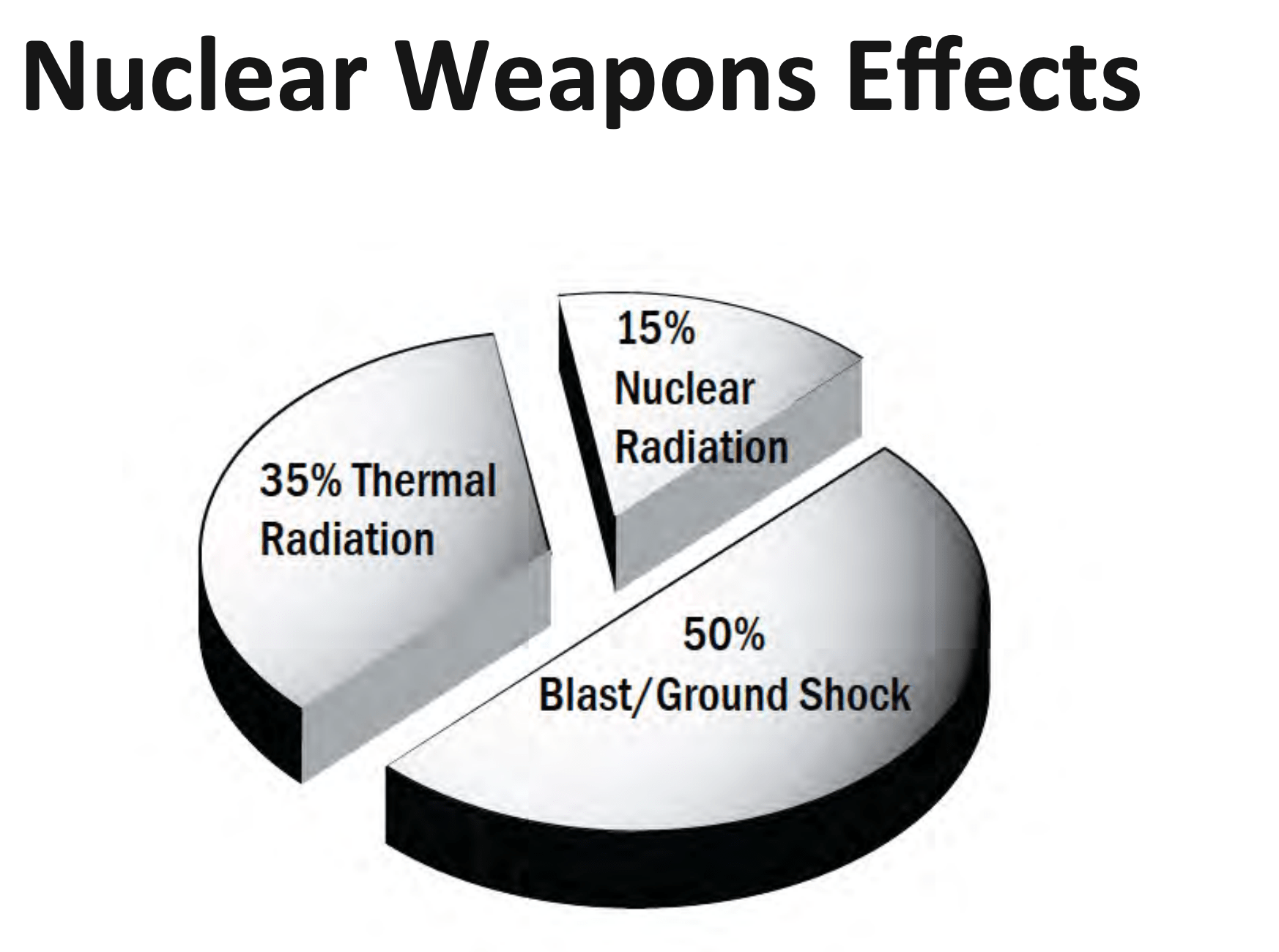
But what if you don’t reflect 100% of the neutrons back? For example, what if 70% of the neutrons produced in a nuclear reaction are released, and only 30% of the neutrons are reflected? There is no doubt that the utilization rate of nuclear materials for nuclear bombs will be greatly reduced, and the power will decrease rapidly. But the by-product is the production of a nuclear weapon that can release many neutrons, which is the neutron bomb.
After calculation, under the conditions of maintaining a certain constant nuclear reaction, up to 68% of the neutrons can be released, and the 32% of the reflected neutrons can still allow the nuclear reaction to proceed for a period of time. So, the shell of the hydrogen bomb was replaced by a material that can transmit most of the neutron flow.
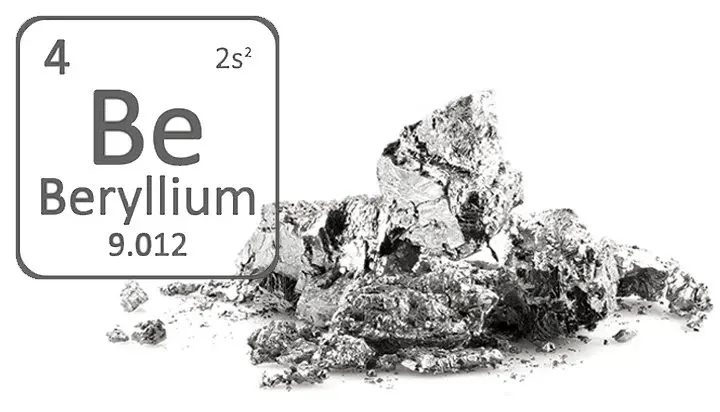
For example, beryllium mesh is a neutron-transmitting material, and a beryllium mesh with a certain thickness structure can transmit a large number of neutrons.
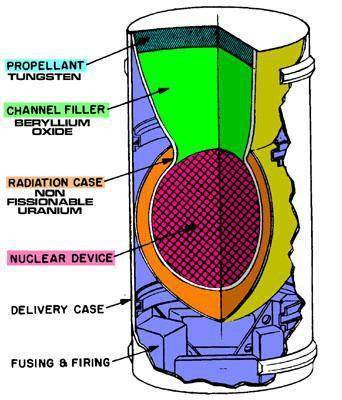
The structure of the neutron bomb was born. Early neutron bomb designs were not just “clean nukes,” they were directed energy weapons. A large jet of neutrons is directed outward through a beryllium-metal neutron window.
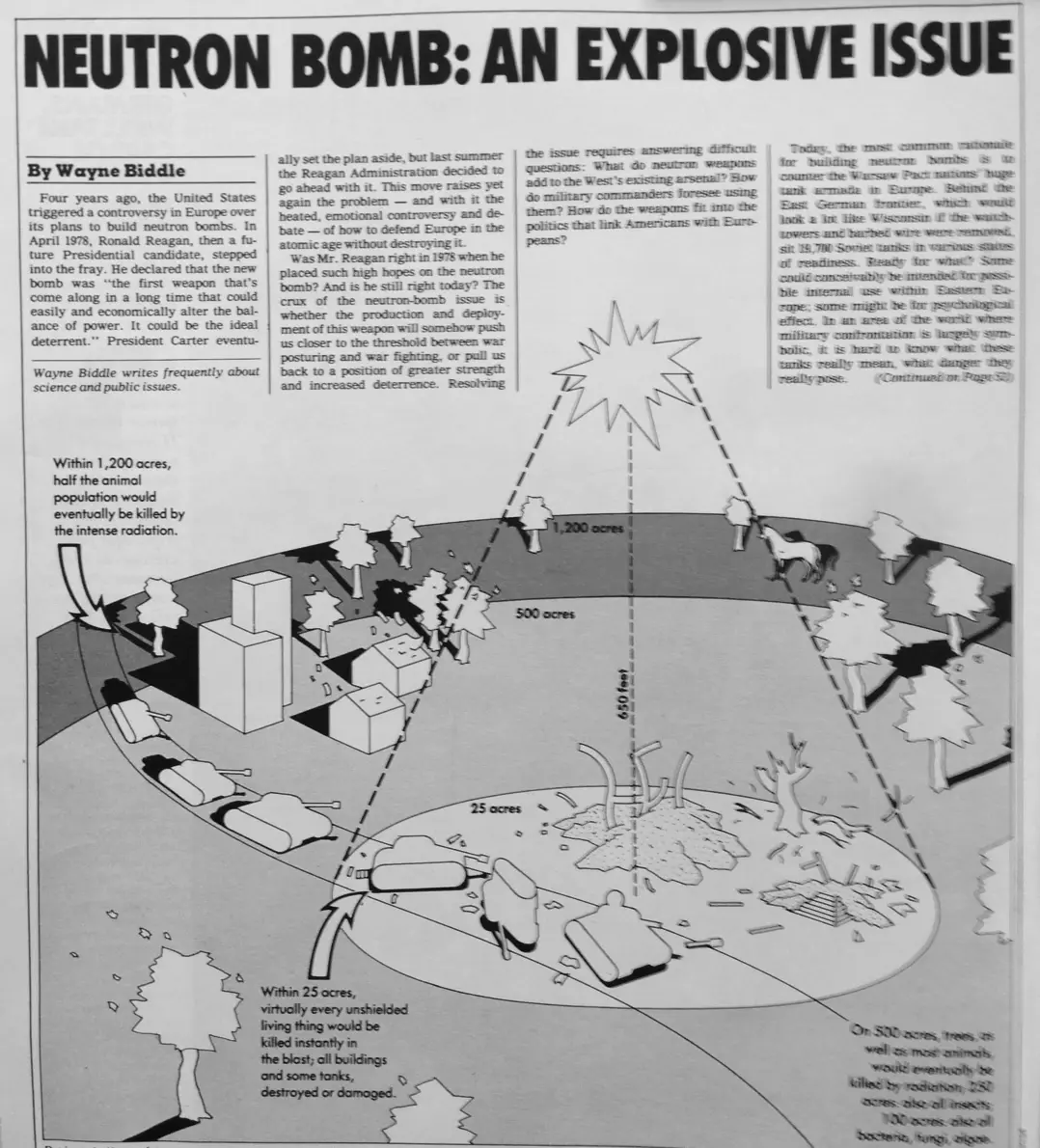
Targeted damage can be done to targets in a specific area.
Why do this? Mainly because the neutron jet has the greatest penetrating power. This is the most penetrating of all radiation types.
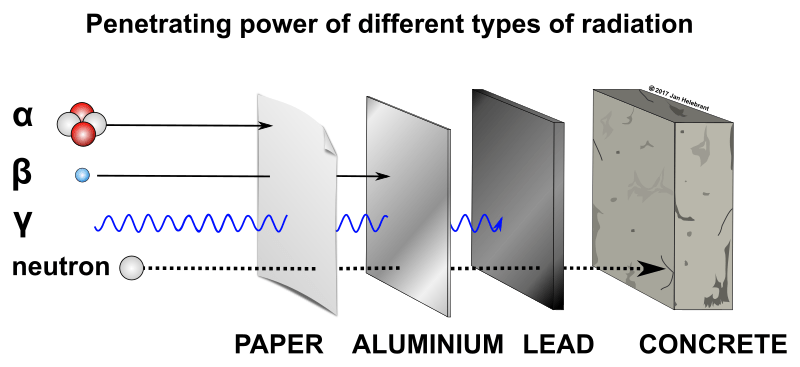
At the same time, the powerful energy of the neutron jet can break protein chains.
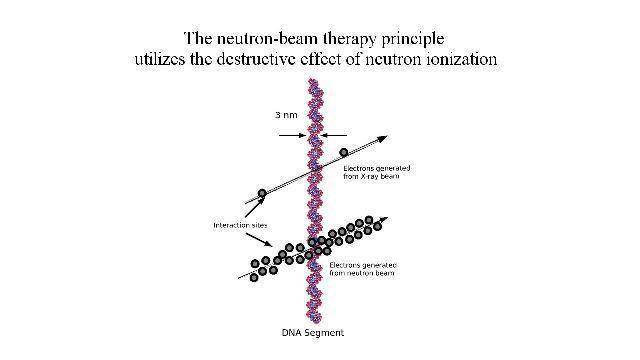
This cuts off the proteins of the organism directly at the molecular level. The cut protein will be denatured. For example, in the eggs we eat, when heated, some chemical bonds on the protein chain in the egg are broken, and the broken proteins are recombined, so I saw the egg white change from a liquid state to a white solid state.

The same is true for the effect of neutron radiation on proteins. Let the protein in the organism become different from before, thus causing acute radiation sickness. In severe cases, people can die in just a few minutes.
So why is it lost?
Mainly because the neutron jet can penetrate steel, this allows neutron bombs to be used to carry out fatal strikes against tanks and armored vehicles in a large area. The impact effect and range on armored vehicle occupants are much better than traditional nuclear weapons. A neutron bomb with the equivalent of 1,000 tons of TNT can allow tank crews within 600 meters to absorb at least 20 Gray neutron radiation (Gray: 1 kilogram of material absorbs one joule of radiation energy), while the half-lethal dose of radiation for humans is only 6 Gray. The radiation range of 6 Gray is about 1500 meters.
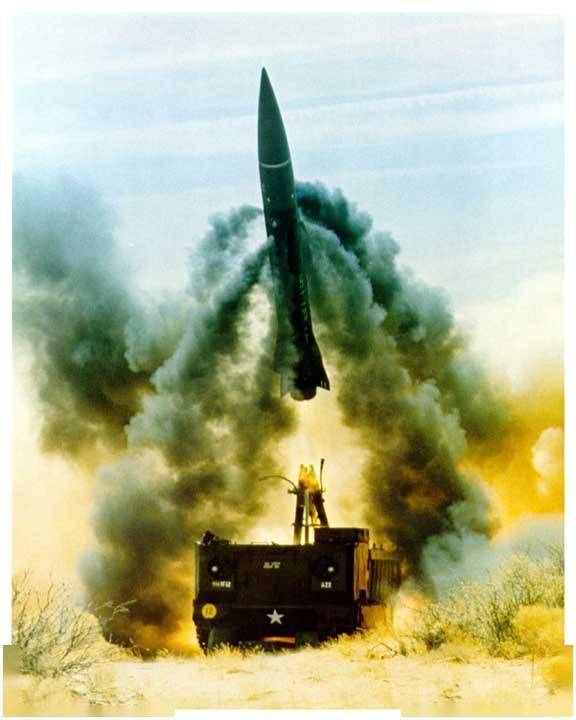
Take the United States as an example: From 1962 to 1982, a total of 2,135 neutron bombs were produced, including 932 W70 Mod 3 neutron bombs, 1,160 W79 Mod 0 neutron bombs, and a small amount of W66 for anti-ballistic missiles.
By 1996, the last W70 mod 3 in the US nuclear arsenal was dismantled, and the stockpile of neutron bombs in the US arsenal disappeared. Our neutron bombs were equipped in 1984, and after a short period of storage, they were also dismantled.
So why are all countries scrambling to remove neutron bombs?
This has to start with the target customer group of neutron bombs – tanks and armored vehicles. Neutrons have a great penetrating effect, but it is not impossible to protect against neutron jets. Since 1980, various countries have paid attention to the design of anti-neutron linings when developing main battle tanks and infantry fighting vehicles.
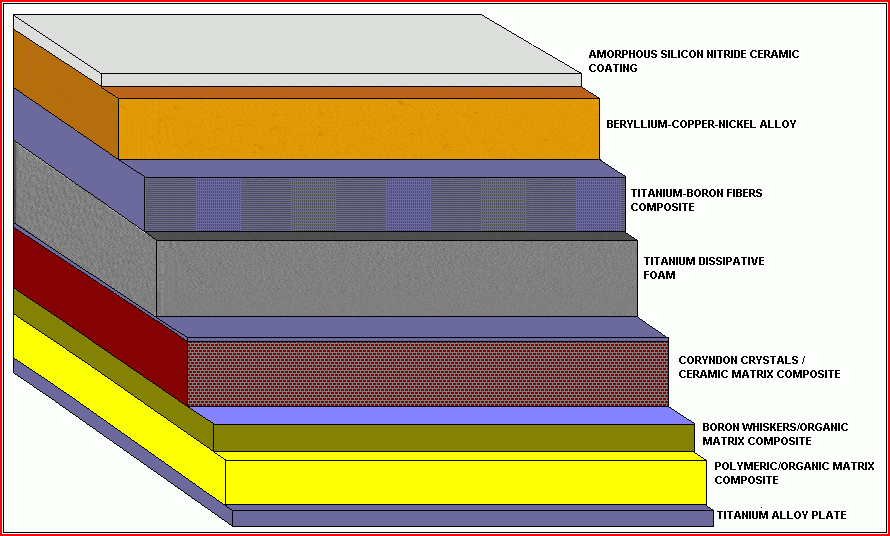
In fact, it is still beryllium. The above is a cross-sectional view of a composite armor. The second layer is an alloy of beryllium, copper, and nickel. It still uses the reflective properties of beryllium to reflect neutrons. At the same time, there is a neutron absorption layer mainly composed of boron in the inner layer of the armor. It also turns out that the tank’s anti-neutron lining greatly weakened the leaked neutron jet by opening a net on the hydrogen bomb. It also directly loses the effect of effectively killing tank crews.
Therefore, although the neutron bomb has a high name and has been blown to the sky by various works, in fact, the neutron bomb is one of the few tragic weapons that were developed and died without being put on the battlefield for the entire service period. It can be called the biggest enemy in the nuclear weapons family.



